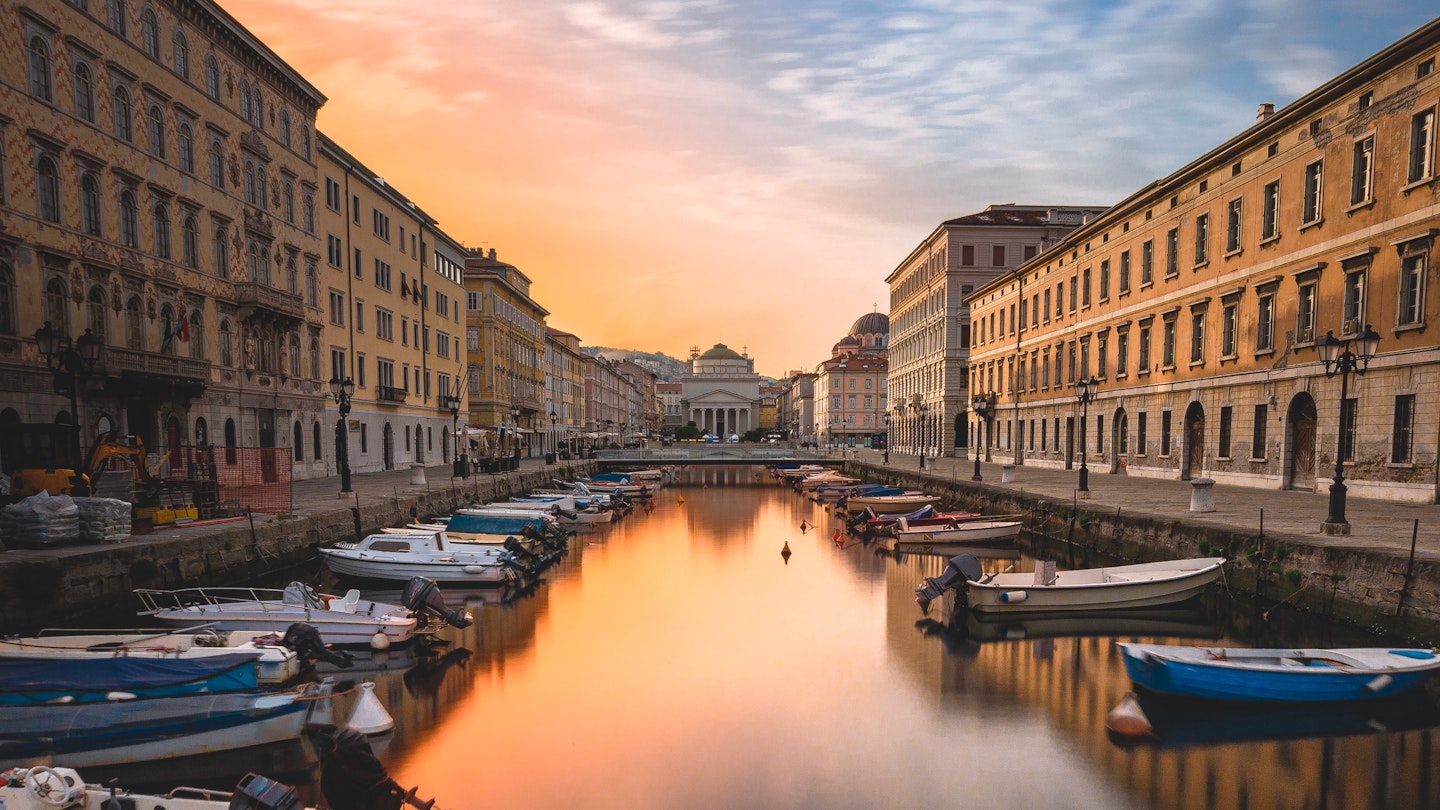Discover Trieste, Italy: A Hidden Gem on the Adriatic Coast
For years, Trieste has laboriously carried the weight of its melancholic reputation. Travel writer Jan Morris once called it the ultimate “nowhere-place”: an Italian city suspended in a faded Austro-Hungarian past and bordered by Slovenia, Croatia, and the Adriatic Sea. However, borders aren’t where things end; they are where they begin, and Trieste is finally stepping into the light.
A Capital of Science
Trieste’s strategic position at the top of the Adriatic has always been its defining feature. Established as a port town, its fortunes took a leap when Austrian Emperor Charles VI declared its port “free” in 1719. Today, the old port is pivotal to the city’s vibrant resurgence. Following decades of neglect after World War I, 600,000 square meters of prime waterfront is undergoing renovation and will become central to events in 2020 when Trieste serves as Europe’s Capital of Science. A Museum of the Sea is in the works, and from June 27 to July 11, the city’s theaters and public spaces will buzz with innovative shows, exhibitions, and activities during the Science in the City Festival.

Trieste: A City for Everybody
Trieste is the polyglot capital of the northeastern Italian province of Friuli Venezia Giulia. From 1380 to World War I, it was under Habsburg rule, serving as a gateway to the world for central Europe. A leisurely stroll around town reveals a rich tapestry of cultures: within 30 minutes, one can visit the Serbian Orthodox San Spiridone church, the Catholic church of Sant’Antonio Taumaturgo, the Greek Orthodox San Nicolò, and one of the largest synagogues in Europe. The local dialect even incorporates elements from German, Italian, Slovene, Greek, and Croatian.
As the jewel in the Austro-Hungarian Empire’s crown, the city promoted diversity and attracted wealthy immigrants. To witness their grandeur, visit the Museo Revoltella, the magnificent mansion of Pasquale Revoltella—a timber merchant who financed the Suez Canal and supported local artists. The museum now houses an extensive collection within two adjoining palaces occupying most of a city block.

The Architecture of Empires
Despite a population of only 200,000, Trieste boasts the majesty of a capital city, complete with remarkable architecture. The city center features a 1st-century Roman theatre, now home to summer concerts. Above, the San Giusto Cathedral and the adjoining Habsburg castle stand on Roman ruins and showcase Byzantine mosaics and Baroque frescoes. A compact medieval core cascades down the hillside, traversing the former Jewish Ghetto to the Borgo Teresiano, the so-called “new” quarter named after Habsburg empress Maria Teresa.
Ordered into existence around 1740, this area redefined Trieste as a modern metropolis, featuring elegant boulevards and squares adorned with grand theatres like Teatro Verdi and fin-de-siècle cafés. Noteworthy among these is Caffè San Marco, now celebrating its 105th year, alongside Caffè degli Specchi, a stunning hall of mirrors overlooking the city’s monumental centerpiece, Piazza Unità d’Italia.
Across history, Trieste has stood at the forefront, witnessing the rise and fall of European empires, which culminated in two World Wars. These turbulent times left behind an art deco lighthouse, the monumental Fascist university on Scoglietto hill, and the Nazi concentration camp at the old rice mill—now known as Risiera di San Sabba, which houses a poignant museum. In response to such dark times, Bishop Antonio Santin of Trieste and Koper built the extraordinary Brutalist Temple of Monte Grisa to symbolize essential peace and unity among people.

Cosmopolitan Dining and Drinking
It’s impossible to discuss Trieste’s cultural diversity without mentioning its exceptional cuisine. Renowned Italian restaurants abound, including the newly awarded Michelin-starred Harry’s Piccolo, located in the historic Grand Hotel Duchi d’Aosta. However, Austrian and Slovenian influences are equally profound. While exploring the city, you’ll come across “buffets,” dark taverns offering fast food originally intended for sailors and dock workers. Enjoy a lunch of jota (a Triestino stew made of sauerkraut, beans, potatoes, and sausage) or tender roast pork served with kren (freshly grated horseradish). Try Da Siora Rosa and Buffet Rudy, both of which are highly recommended.
Today, it feels as though everything old is new again in Trieste. The city’s vibrant coffee culture (Trieste is Italy’s largest consumer of coffee) and heritage Austrian brew pubs blend seamlessly with the contemporary trend of craft beer and specialty coffee. Furthermore, Piolo e Max have breathed new life into the traditional post-dinner digestivo, infusing local grappas and bitters with aromatic botanicals. Additionally, Trieste’s signature aperitivo, the “hugo” (a mix of Tyrolean elderflower, Italian Prosecco, mint, and lime), offers a sophisticated twist on the classic orange Aperol spritz. Sip one on the rooftop of The Pier, a bar elegantly perched atop the San Giusto yacht club.

Discovering Trieste: Get Out of Town
Triestini are proud of their enviable quality of life, a benefit that extends to travelers as well. You could spend weeks here, embarking on the Delfino Verde ferry to the Venetian fishing port of Muggia or the sandy barrier island of Grado. Alternatively, take a bus to Bagnoli and cycle through the Val Rosandra along the old railway line from Trieste to Draga Sant’Elia in Slovenia. Or venture in the opposite direction to Duino Castle and hike the coastal cliffs that inspired poet Rainer Maria Rilke in his Elegies. City lidos, like Bagno Marino Lanterna, offer refreshing swims, or escape to Barcola’s 10km-long waterfront promenade for late-afternoon dips and fried fish suppers.
Diving enthusiasts can explore the underwater wonderland at the Miramare Marine Reserve, located just below the vibrantly colored Castello di Miramare. Additionally, wine lovers will delight in the karst plateau’s vineyards, where top-notch vintners like Skerk and Zidarich produce exquisite natural wines. The Strada Napoleonica hiking trail offers a scenic path through osmize (pop-up farm restaurants) where wine tastings and breathtaking views over the city await.
It is these simple pleasures, alongside the always-present view of the stunning azure bay, that embody the true enchantment of Trieste. As many travelers have discovered, you might just find yourself extending your stay longer than anticipated.





